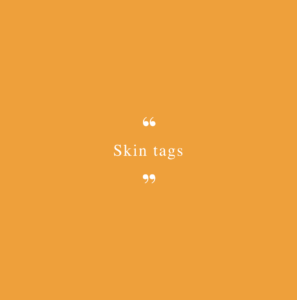Refinery29: Your 7 Biggest Vagina Concerns, Answered By Experts
Share

64% of women were concerned about the size of their vulva – including the size of the clitoris, their labia and what one respondent called a “fatty upper pubic area” (mons pubis). Is the size of a vulva or vagina ever a legitimate cause for concern?
Dr Olaitan: “There is no standard shape of vagina or vulva. There are as many varieties as there are of facial features. The mons pubis will vary in size: larger women will store more fat there, while it may be completely flat in thinner women.
“Women should [only] be concerned if anything changes, apart from the expected changes at puberty. Any new lumps, bumps, discomfort, itch, change of colour, size or symmetry should be reported to a GP or gynaecologist.”
Dr Frodsham echoes this advice, pointing out that “women rarely see other women’s vulva” aside from through “surgically enhanced” and hairless pornographic images, which are intended “to look more like pre-pubescent vulvas”. For a more realistic view of female “normal anatomy”, she recommends checking out Jamie McCartney’s Great Wall of Vagina, the British Society for Paediatric and Adolescent Gynaecology’s ‘So what is a vulva anyway?’ resource, and the Vagina Museum (when it eventually opens).

60% of women were concerned about the shape of their vulva – including their “uneven labia” and the shape of the vaginal opening. Are there any instances in which the shape of a vulva or vagina may be a legitimate worry?
Dr Frodsham: “During puberty there is often more rapid growth of the labia minora (inner lips or folds of skin) in comparison with the labia majora (outer lips) and mons (hair-bearing skin). During this process, teenagers might find that their sensitive inner lips chafe against underwear during sports. We would advise wearing soft cotton/bamboo pants (with no central seams) or liners for comfort, and applying emulsifying cream or coconut oil before sports to improve comfort.”
Surgery, she advises, is only necessary in extreme instances and in any case, “should be withheld until over 18 years, as the growth of the labia minora usually catches up and pubic hair also acts as a cushion.” Dr Olaitan says women with “pathologically large” labia that keep “getting caught in clothing” may consider surgery.

Almost a third (30%) of women were concerned about the colour of their vulva – including cases of acanthosis nigricans and simply thinking theirs was “too dark”. What would you say to these women? Are there any instances in which the colour of a vulva may be a cause for genuine concern?
Dr Frodsham: “Pigmentation of the vulva varies, like skin on the rest of the body, but can be increased during pregnancy and with ageing. If this is a sudden increase, particularly in association with obesity, it may indicate acanthosis nigricans, which may be a marker for diabetes or metabolic syndrome, and you should seek medical advice.”
Dr Olaitan says the appearance of white marks might indicate “skin abnormalities such as lichen sclerosus, psoriasis or eczema,” while a dark spot might be a sign of melanoma. “The important thing is to be aware of what’s normal for you. A change in colour is important and should be reported.”

Many women complained about how much pubic hair they have (both too much or too little), ingrown hairs caused by hair removal, and subsequent scarring and bumps. One respondent cited her “raised white scars from ingrowns and hair colour/fullness”. Are there any instances in which this might be a medical concern? And are there any gynaecologically approved ways to tackle the problem?
Dr Frodsham: “Folliculitis, infection around the hair follicle, is common with any hair removal. Simply trimming pubic hair or leaving it to grow will obviate the need for treatment. Most beauticians advocate exfoliation after waxing, but I’m not aware of evidence to support this. Rarely, persistent folliculitis can be associated with diabetes and should be seen by a doctor. Very rarely this may require antibiotic therapy.”
She also emphasises the fact that “the trend for hair removal is driven by young people’s perception of normal that’s driven by pornography. Hair is removed to give a better view of the sex organs.”
Dr Olaitan warns against picking ingrown hairs, which causes scarring. “There are various salicylic acid products that reduce or prevent ingrown hairs. Laser hair removal is permanent and prevents these problems. Women should report ingrowing hairs if the lesion fails to resolve after a period of about a month or so, or if it forms a painful abscess.”

Genital skin tags were mentioned repeatedly by our respondents as a source of angst. “I had a skin tag on it that I went to the doctor about,” said one, while another cited a “suspected skin tag/polyp”. In some cases, they caused discomfort. How common are vulval skin tags? What do they mean? And what should be done about them?
Dr Frodsham: “Vulval skin tags are very common and can increase in pregnancy and with age. Women often raise concerns about skin tags that are actually very normal hymenal remnants around the opening to the vagina. Rarely, skin tags can be associated with diabetes and so should be discussed with their doctor if they are multiple or developing rapidly.” However, they’re “usually nothing to worry about,” she adds.
Dr Olaitan also says vulval skin tags generally occur naturally, adding: “Occasionally they may develop in response to trauma. If they cause discomfort, they can be removed, often by a simple outpatient procedure. If a tag grows, starts bleeding or becomes painful or ulcerated, this may indicate malignancy and these changes must be reported immediately.”

Many women said they were worried about changes to their vulva and vagina following childbirth, including “scars from deep tearing” and/or episiotomy(a cut between the vagina and anus), and it being “baggy looking”. Are concerns about the appearance of vagina and vulva after childbirth normal, and should they ever be a cause for genuine concern?
Dr Frodsham: “Changes from childbirth are common but most will improve by 18 months postpartum. Pelvic floor exercises (sometimes guided by a women’s health physio) can help to improve muscle tone and sexual enjoyment for women. Perineal (around the opening of the vagina and over any scar tissue) massage with coconut oil can also help with any postnatal discomfort.”
When it comes to sex, she advises: “If you experience sexual pain after childbirth (as common in the first six months for vaginal delivery and Caesarean delivery), see your doctor. They may be able to help or refer you to a specialist (the Institute of Psychosexual Medicine has a referral list for specialist doctors).”
Breastfeeding, which is associated with the suppression of oestrogen, can prolong vaginal issues, Dr Frodsham adds: “Oestrogen cream can help to resolve symptoms. Absorption is extremely low so it will not affect milk production. Some women also find that menthol-based lubricants or desensitising lubricants can really help. Surgery to remove scars will often cause more scarring so is not advised as a first line therapy. Women’s health physiotherapists can really help with scarring.”
Dr Olaitan concurs: “The vulva and vagina will almost inevitably change after childbirth due to stretching and hormonal changes. Most women adjust to their ‘new normal’ but if the episiotomy scar remains painful or if sex is uncomfortable then women should seek help. Occasionally, surgical revision may be required.”

Acne-like spots and “breakouts” – on the labia majora and pubis – were also a concern for many women who answered our survey. How common is this? What are some possible causes? And are there any gynaecologically approved ways to prevent spots ‘down there’?
Dr Frodsham: “Spots on the vulva are probably related to hair removal and infection of the hair follicle. Leaving pubic hair to grow or simply trimming it will be likely to reduce breakouts. If breakouts are common despite these measures, diabetes might be likely and this needs review by a doctor. Wearing cotton/bamboo underwear/sanitary protection may reduce perspiration and therefore breakouts. Plastic-based pads and those with a gel base can cause skin flare-ups and should be avoided.”
Dr Olaitan recommends “good hygiene” to reduce the likelihood of vulval acne. “Spots and acne are usually due to blocked oil glands that get infected. If they occur frequently and in clusters, there might be a need for antibiotic treatment.”




Follow Us